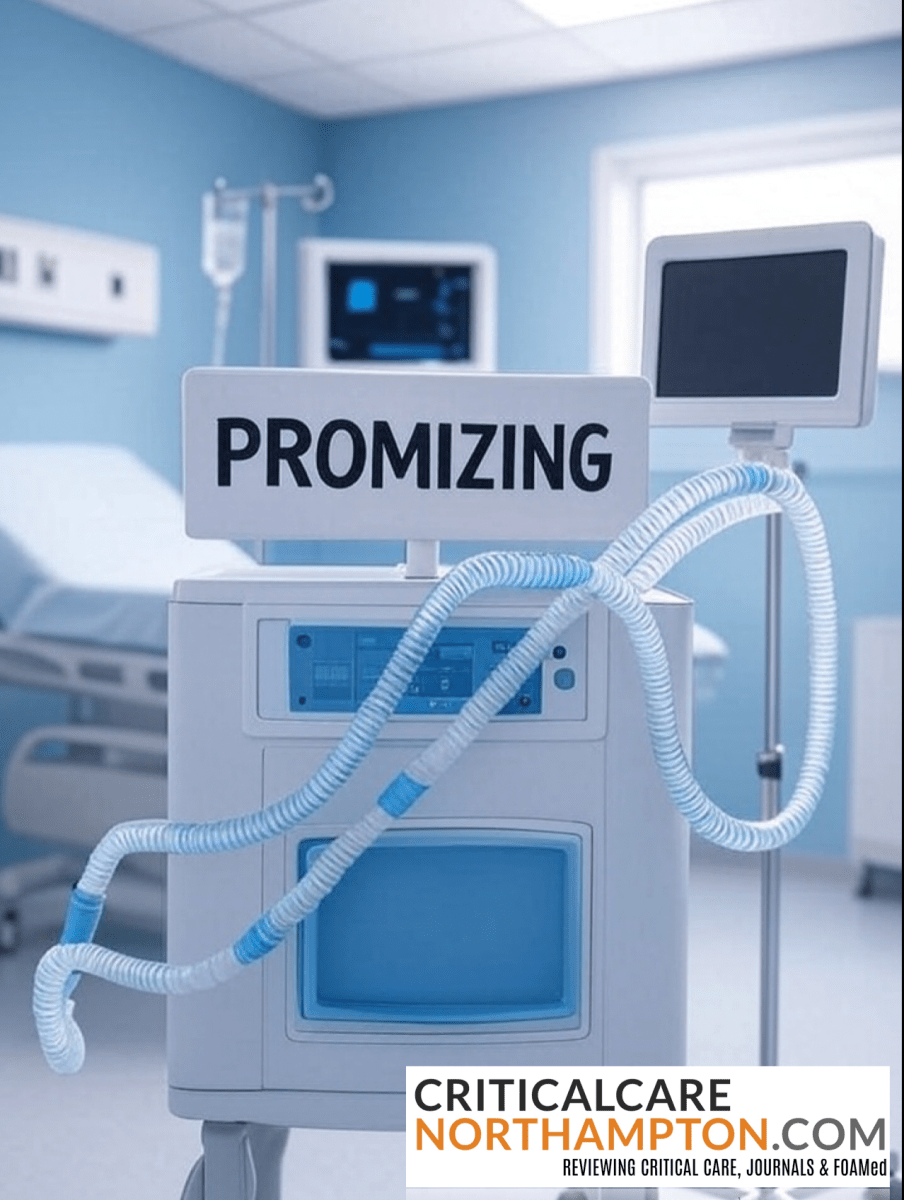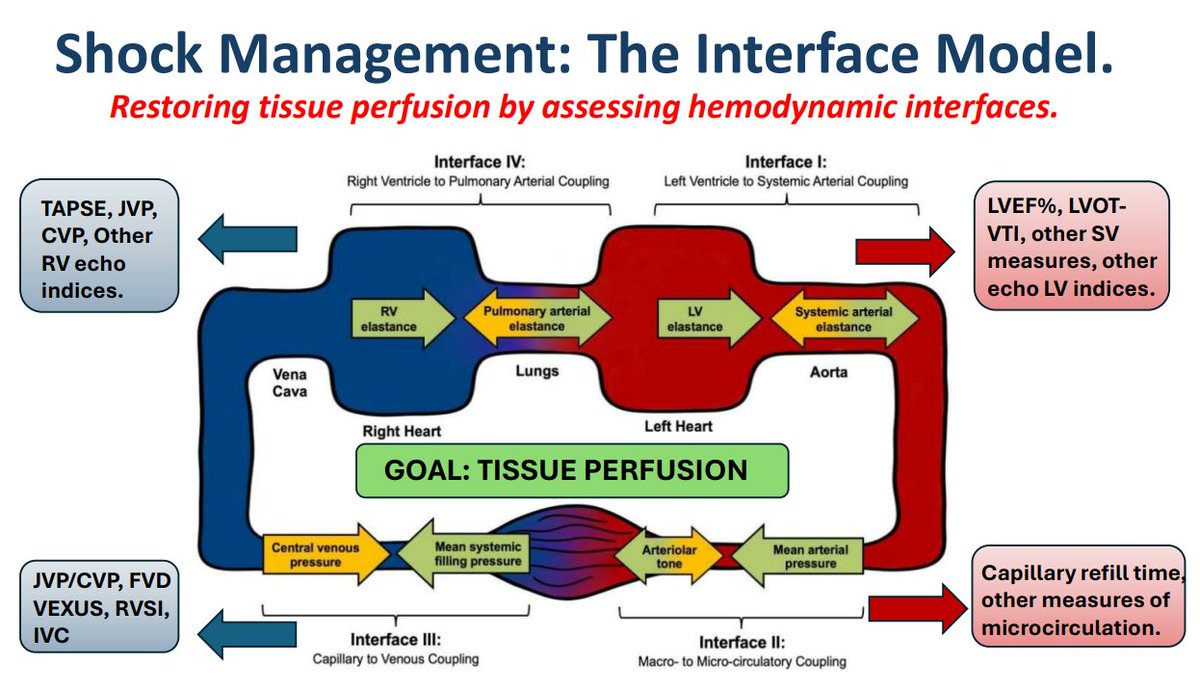What was it?
Multicenter, open-label, randomized controlled trial evaluating proportional-assist ventilation with load-adjustable gain factors (PAV+), versus pressure-support ventilation (PSV), to reduce the duration of mechanical ventilation in critically ill adults.
The Devil in the Details!
- 23 centres in 7 countries
- 573 patients analyzed
- PAV+ versus PSV initiated within 48 hours of mechanical ventilation.
- Adult patients requiring invasive mechanical ventilation for ≥24 hours.
- Primary outcome: Time to successful extubation (time from randomization to extubation without reintubation for 48 hours).
- Secondary outcomes: Duration of mechanical ventilation, ICU/hospital length of stay, mortality, reintubation rates, and adverse events (e.g., barotrauma, patient-ventilator asynchrony).
- Trial registered: NCT02447692.
The Results!
- The median time to successful liberation from mechanical ventilation was
- 7.3 days (95% confidence interval [CI], 6.2 to 9.7) in the PAV+ group
- 6.8 days (95% CI, 5.4 to 8.8) in the PSV group (P=0.58).
- The incidence of death by day 90
- 29.6% in the PAV+ group
- 26.6% in the PSV group,
- The median number of ventilator-free days, the incidence of reintubation and tracheostomy, all of which were secondary outcomes, were similar in the two groups.
- With respect to sedative drugs, the mean (±SD) difference in the midazolam-equivalent dose at day 28 relative to the baseline dose was
- −1.51±3.28 mg per kilogram of body weight in the PAV+ group
- 0.04±0.97 mg per kilogram in the PSV group.
- Serious adverse events occurred in
- 31 patients (10.8%) in the PAV+ group
- 28 patients (9.8%) in the PSV group (P=0.79).
- No significant difference in time to successful extubation: PAV+ median 4.9 days vs. PSV 5.1 days (hazard ratio 1.04 [95% CI 0.89–1.22], p=0.63).
- No differences in secondary outcomes: Duration of mechanical ventilation (PAV+ 6.1 vs. PSV 6.3 days, p=0.72), ICU length of stay (9.2 vs. 9.5 days, p=0.81), or hospital mortality (PAV+ 28.1% vs. PSV 29.4%, p=0.71).
- Reintubation rates similar (PAV+ 12.5% vs. PSV 13.1%, p=0.82).
- Patient-ventilator asynchrony lower with PAV+ (mean asynchrony index 2.1% vs. 3.4%, p=0.03).
- Safety profile: No significant differences in barotrauma (PAV+ 3.4% vs. PSV 4.0%, p=0.67) or other adverse events.
They concluded
The authors concluded that PAV+, compared to PSV, did not shorten the time to successful extubation in critically ill patients requiring mechanical ventilation.
Gripe Point Summary!
Detailed gripes below, but in brief:
- Open-label design risks performance bias.
- Limited generalizability due to specialized PAV+ expertise required.
- Heterogeneous patient population dilutes effect size.
- No blinding of outcome assessors for subjective secondary outcomes.
- Short follow-up (48 hours post-extubation) may miss late reintubation.
- PAV+ training varied across sites, potentially affecting fidelity.
- No adjustment for baseline asynchrony or sedation protocols.
- Small effect on asynchrony may not be clinically meaningful.
Our Summary
In critically ill adults, PAV+ did not reduce time to successful extubation or other clinical outcomes compared to PSV, despite slightly better patient-ventilator synchrony. While PAV+ is safe, its complexity and lack of clear benefit limit its routine use over PSV. Larger trials with standardized protocols may clarify its role in specific populations.
Who’s worked on this before?
Further gripes
- Open-label design: Lack of blinding for clinicians and patients risks performance bias, as ventilator adjustments may have been influenced by knowledge of the mode.
- Specialized expertise: PAV+ requires training and familiarity, which varied across sites. This may have reduced its effectiveness in less experienced centers.
- Heterogeneous population: Included medical and surgical patients with diverse etiologies (e.g., sepsis, ARDS, trauma), potentially masking benefits in specific subgroups.
- No assessor blinding: Subjective secondary outcomes (e.g., asynchrony scoring) were not blinded, risking detection bias.
- Short follow-up: 48-hour post-extubation window may miss late reintubations or complications, underestimating failure rates.
- Sedation variability: Sedation protocols were not standardized, and PAV+ may require less sedation, which was not controlled for.
- Asynchrony effect size: While PAV+ reduced asynchrony, the clinical relevance of a 1.3% difference in asynchrony index is questionable.
- Baseline imbalances: No adjustment for baseline patient-ventilator asynchrony, which could influence outcomes.
- Exclusion criteria: Excluded patients with severe neuromuscular disease or high ventilator dependence (>7 days expected), limiting applicability to complex cases.
- Statistical power: Powered for a 20% reduction in extubation time, but smaller, clinically meaningful differences may have been missed.
- Cost and feasibility: PAV+ ventilators are costlier and less widely available than PSV-capable machines, reducing practical adoption.
CCN’s Reflection
This well-conducted multicenter trial puts a dent in the enthusiasm for PAV+ as a game-changer in mechanical ventilation. Despite theoretical advantages in patient-ventilator synchrony, PAV+ failed to deliver on faster extubation or better outcomes compared to the simpler, widely used PSV. The open-label design and variable expertise across sites muddy the waters, but the results suggest PAV+ isn’t worth the extra effort or cost for most ICUs. Future studies should focus on specific patient groups (e.g., high asynchrony or COPD) and standardize training and sedation to see if PAV+ can carve out a niche. For now, PSV remains the pragmatic choice. Stay tuned for more ventilator mode showdowns!
Written by JW









